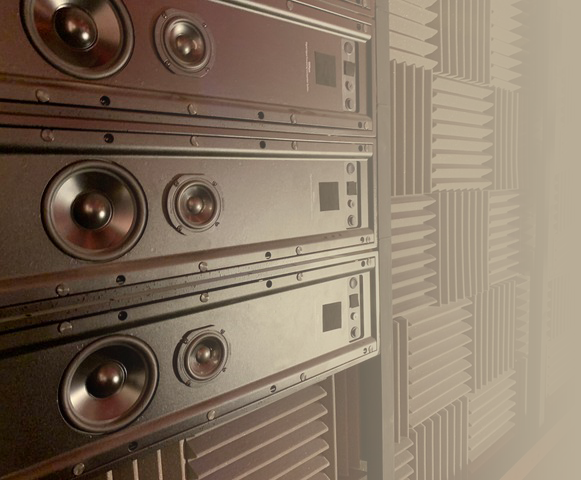High-Power Array (HPA) is a technology upgrade from Meridian that optimizes the output and coverage of sound when three Meridian architectural loudspeakers are arranged in a close-proximity array configuration.
When designing large home cinemas, integrators aim to achieve high SPL targets across the entire listening region, without distortion.
CEDIA guidelines recommend a THX Reference level 105dB for the main listening position. This challenge that typically requires the need to move to compression drivers that lack the required high frequency extension, resolution, and clarity; a deeper installation depth for larger high SPL speakers; and a greater number of larger power amps in the rack that generate more heat.
Meridian, co-founded by the legendary Allen Boothroyd, is providing the solution to this challenge with the newly developed HPA technology, enabling integrators to install three identical DSP loudspeakers in a stack or array configuration.
The HPA configuration ensures minimal interference and spectral variation between speakers, resulting in an even response so that every listener in the room can experience Meridian’s signature high-resolution sound and fidelity.
This installation method also enables the integrator to maintain the 100mm mounting depth and the additional channels don’t require any extra equipment in the rack.
“HPA represents a continuation of Meridian utilizing the power and flexibility offered by the DSP within our loudspeakers to solve problems that would otherwise be difficult or potentially impossible to solve,” said Dr. Laurence Hobden, research and applied technologies team leader at Meridian. “By considering what is both objectively and subjectively important, we have been able to engineer an elegant solution to a real-world problem presented to us by our design and integration team.
“HPA processing,” Hobden continued, “minimizes the interference between close proximity loudspeakers by carefully controlling their magnitude and phase responses. This allows multiple loudspeakers to be used as a single channel, offering increased SPL whilst maintaining detail and fidelity.”
When installing the loudspeakers, the spacing between each one should be 50mm or less — the closer the speakers, the better the performance. For horizonal installs, the listener’s ears should be positioned directly in line with the primary loudspeaker, and at a distance of at least 4m from the array, while for vertically mounted loudspeakers, the line should target the tweeter drivers.
“The development of HPA is the latest in a long history of innovation from Meridian that we are extremely proud of,” comments Barry Sheldrick, director of sales at Meridian. “HPA gives our architectural range real breadth and allows our loudspeakers to deliver the best possible performance in larger rooms.
“With this patent-pending technology,” Sheldrick continued, “integrators get the benefits of incredibly high SPL, without the drawback of comb filtering, with our signature audio quality. Our speakers in an HPA configuration sound exactly like a single speaker would do, they just play a whole lot louder.”
Available for use with Meridian’s architectural range – including the DSP520.2, DSP640.2, DSP750, and DSP730 – the three loudspeakers are installed with the center speaker assigned as the “primary” product and the outer two speakers classed as the “secondary” products. This is the same whether installed vertically or horizontally.
To allocate a role, the integrator is required to send one RS232 command to each individual loudspeaker within an array.








